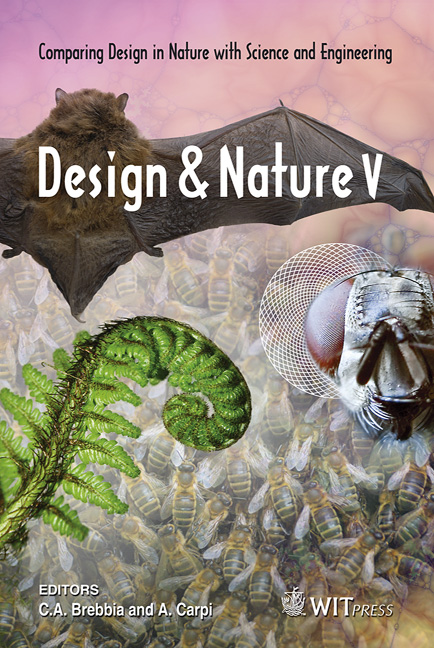Interaction Between The Belousov-Zhabotinsky Reaction And Lipid Membranes: A Kinetic Investigation
Price
Free (open access)
Transaction
Volume
138
Pages
8
Page Range
339 - 346
Published
2010
Size
3,037 kb
Paper DOI
10.2495/DN100291
Copyright
WIT Press
Author(s)
F. M. Pulselli, M. Catalucci, F. Rossi & N. Marchettini
Abstract
Far-from-equilibrium oscillating chemical reactions are among the simplest systems showing complex behaviours and emergent properties, when coupled with diffusion they can behave as excitable media and support impulse and wave propagation. The reaction–diffusion approach has been widely employed to explain patterns generation in a great array of biological processes, like limb development and skin pattering. During the past years our group has been studying the mechanisms of pattern formation and wave propagation occurring when the well known Belousov- Zhabotinsky (BZ) reaction is carried out in membranes, i.e. the lamellar phases generated by the. 1,2-dipalmitoyl-sn-glycero-3-phosphocoline (DPPC). Many kinetic parameters of the BZ reaction were found to be influenced by the addition of increasing amounts of DPPC. The aggregates in solution are likely capable of interacting with many of the BZ intermediates, like radicals and molecular bromine. In this paper we will illustrate the results coming from a kinetic study on the temporal and spatio-temporal modifications (increase in amplitude of oscillations, increase of the lifespan of the oscillatory regime, etc.) induced on the BZ reaction by the presence of DPPC. Keyword: Belousov-Zhabotinsky, biomimetics membrane, chemicals oscillators, thermodynamics in nature. 1 Introduction The Belousov-Zhabotinsky (BZ) reaction is the most famous and thoroughly studied chemical oscillator. Initially proposed as a simplified scheme of a
Keywords
Belousov-Zhabotinsky, biomimetics membrane, chemicals oscillators, thermodynamics in nature





